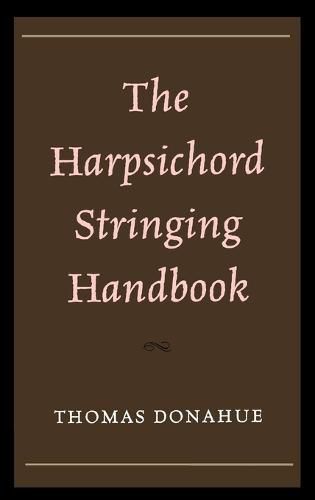Readings Newsletter
Become a Readings Member to make your shopping experience even easier.
Sign in or sign up for free!
You’re not far away from qualifying for FREE standard shipping within Australia
You’ve qualified for FREE standard shipping within Australia
The cart is loading…






The harpsichord was the standard keyboard instrument for three centuries before the invention of the piano. It enjoyed a revival in the second half of the twentieth century, but because of the interruption in its history as a more regularly used instrument, many details about its construction are lacking. In The Harpsichord Stringing Handbook, Thomas Donahue integrates available historical evidence and modern physical principles-from both musicological and scientific literature-to provide practical quantitative information about the stringing of this instrument.
The Harpsichord Stringing Handbook covers the composition and properties of iron and brass wire, the interrelationship of frequency to string length, safety factors involved with stringing, the scaling of string lengths, the calculation of diameters, and the determination of the transition from iron to brass in mixed-strung instruments. Supplemental topics include the elasticity and plasticity of wire, inharmonicity, tension and stress, and the interpolation of string lengths. Additional material includes data on selected historical harpsichords, absolute diameters of historical gauge numbering systems, a generated list of tensile strength values for historical wire, and sizes and tensile strengths of currently available wire.
This book offers specific guidance for instrument makers, restorers, curators, technicians, musicians, kit builders, wire manufacturers, and acousticians, filling in critical details that historical treatises and surviving instruments may not clearly address.
$9.00 standard shipping within Australia
FREE standard shipping within Australia for orders over $100.00
Express & International shipping calculated at checkout
The harpsichord was the standard keyboard instrument for three centuries before the invention of the piano. It enjoyed a revival in the second half of the twentieth century, but because of the interruption in its history as a more regularly used instrument, many details about its construction are lacking. In The Harpsichord Stringing Handbook, Thomas Donahue integrates available historical evidence and modern physical principles-from both musicological and scientific literature-to provide practical quantitative information about the stringing of this instrument.
The Harpsichord Stringing Handbook covers the composition and properties of iron and brass wire, the interrelationship of frequency to string length, safety factors involved with stringing, the scaling of string lengths, the calculation of diameters, and the determination of the transition from iron to brass in mixed-strung instruments. Supplemental topics include the elasticity and plasticity of wire, inharmonicity, tension and stress, and the interpolation of string lengths. Additional material includes data on selected historical harpsichords, absolute diameters of historical gauge numbering systems, a generated list of tensile strength values for historical wire, and sizes and tensile strengths of currently available wire.
This book offers specific guidance for instrument makers, restorers, curators, technicians, musicians, kit builders, wire manufacturers, and acousticians, filling in critical details that historical treatises and surviving instruments may not clearly address.